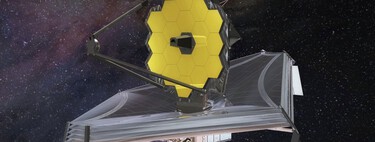NASA says goodbye to SOFIA: why it has decided to retire the Boeing with a reflecting telescope that detected water on the Moon

It is unavoidable. Sooner or later, all astronomical instruments —even the most emblematic, such as the Hubble telescope— have to retire. At NASA they have decided that it is the turn of the Stratospheric Observatory for Infrared Astronomy. SOFIA, for friends. So, with its first name, it may not tell you much, but SOFIA is a unique resource in the scientific arsenal: a modified Boeing 747SP aircraft with a reflecting telescope attached. Thanks to him, in 2020 we “unequivocally” detected water on the sunlit surface on the Moon.
Why have those responsible for NASA and its partners in the project of the German Aerospace Center (DLR)? Well, for a mixture of costs and balances. SOFIA’s high bill it does not compensate for the scientific yield that we are extracting from it.
What specifies the US agencythe 2020 astronomy and astrophysics survey conducted by National Academies concluded that “SOFIA’s scientific productivity does not justify its operating costs”. The technicians also warn in their analysis that the capacity of the device does not coincide with the scientific priorities that have been identified for the next decade.
a unique tool

NASA and your German partner (DLR) They decided to follow the recommendations and set an end date for SOFIA’s services. the famous Boeing 747SP adapted will retire in a matter of months, the September 30, 2022. And that as a deadline, once you have completed all the scheduled operations. It will do so after eight years of service and well before what was thought at least in one source. The observatory was planned to a useful life of 20 years.
The announcement, in any case, is not a big surprise. Apart from the conclusions of US academics, in recent years the scientific balance of SOFIA had already been questioned on several occasions. In 2019 an analysis commissioned by NASA itself It warned that throughout its first six years it had given rise to 178 scientific articles, far from the 900 achieved during the same period by Hubble. To remedy this he went so far as to reframe his focus and direction.

Its end will save a significant amount of funds to the US agency. Every year –precise Nature— NASA spends some $85 million to pay for its operation, almost as much as the operating expenses of the hubble space telescope. The project also receives funds from the German Aerospace Center, which contributes 20% of the operating bill.
That it is so expensive is largely explained by the peculiarities that make SOFIA unique. Being embedded in a plane, its operation requires the participation of pilots and the maintenance of the ship. Since it was activated in 2014, it is estimated that the Stratospheric Observatory for Infrared Astronomy has recorded 800 scientific flights.

Of which there is no doubt, as he points out to Nature Walther Pellerhead of the German space agency, is that SOFIA is a “globally unique” resource. The Boeing 747SP was modified to cut a hole in its side and dock a 2.5 meter wide telescope and 17 tons, a device designed with a clear objective: to study the universe during maneuvers that raise it between 11 and 14 kilometers, to a range of altitudes in which it takes advantage of water vapor shortage.
The conditions he finds there prevent his work from being greatly affected by atmospheric distortion and allow him to obtain much more accurate results. Today SOFIA is the only observatory that can perform analysis at certain far-infrared wavelengths.

Its main mission lasted five years, but it was currently completing an expansion for another three. Since 2014 she has measured magnetic fields of distant galaxies, detected water in sunlit areas on the Moon and also helium hydride, the first type of ion to form in the Universe. Despite this service record, the survey in which US experts analyze the future of astronomy and astrophysics awarded him a low ratinga decision that influences both its balance at a scientific level and the high costs required to keep it operational.
The announcement of its closure has also generated some criticism that especially emphasizes its unique capabilities and ongoing programs that could benefit from its data. “The closure is unfortunate for linar science and exploration. We just started mapping water on the Moon.” Paul Lucey regretsof the University of Hawaii, who stresses: “There are no other observatories or spacecraft capable of mapping the water molecule on the illuminated Moon.”
Reference-www.xataka.com